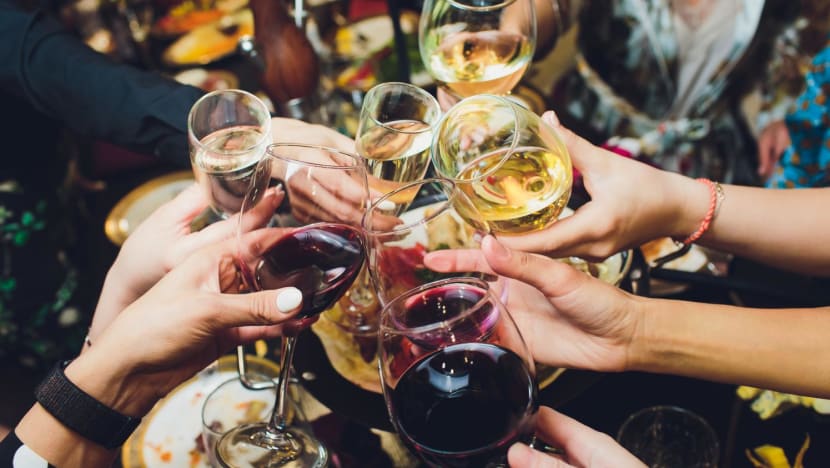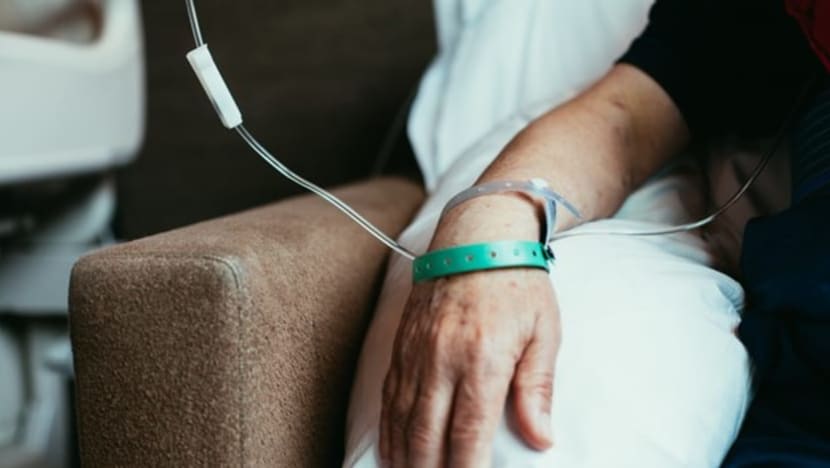Commentary: Not just the ‘Asian flush’ – the health risks of alcohol have never been clearer
Is it safe to drink alcohol in moderation? Novi Health’s Kyle Tan weighs in on the US surgeon general’s warning about alcohol and cancer.


This audio is generated by an AI tool.
SINGAPORE: If a bottle of wine came with a label that read: “Warning: Consuming this product increases your risk of cancer,” would you think twice before pouring a glass?
That’s the debate unfolding now, thanks to the United States surgeon general’s recent push for such warnings. Alcohol has long been celebrated for its role in social gatherings and in helping people unwind after a long day, not to mention the supposed heart health benefits. But emerging research paints a far more sobering picture.
It’s one worth paying attention to, especially for those thinking about their long-term health and wellness.
But isn’t drinking alcohol supposed to be fine – so long as we do so in moderation? And aren’t the centenarians living in so-called “Blue Zones” like Sardinia and Okinawa known for drinking regularly?
A glass of red wine a day has even been touted as part of a “healthy” Mediterranean diet since the 1980s, believed to improve heart health. This view was largely based on studies that found moderate alcohol drinkers often had lower rates of heart disease compared to heavy drinkers or those who abstained altogether.

But many of those studies failed to account for “sick quitters” or those who did not drink due to pre-existing health issues. This may have made moderate drinkers seem healthier than they actually were.
Over time, as research methods improved, so did our understanding of alcohol’s impact on the body. And unfortunately, the latest findings aren’t as comforting.
“ASIAN FLUSH” AND THE CANCER CONNECTION
The evidence has become clearer: Alcohol consumption increases the risk of several cancers, including those of the mouth, throat, oesophagus, liver, breast and colon - with the last three among the deadliest cancers in Singapore and globally.
The World Health Organization classifies alcohol as a Group 1 carcinogen, placing it in the same category as tobacco and asbestos.
Here’s why: When we drink, the body breaks alcohol down into acetaldehyde, a toxic compound that damages DNA. This damage makes it harder for the body to repair itself, increasing the risk of mutations that can lead to cancer. Alcohol also increases oestrogen levels, which may explain its strong link to breast cancer in women.
Even light to moderate drinking has been associated with higher cancer risk. A study published in Lancet Oncology suggests that about 4 per cent of new cancer cases globally in 2020 were linked to alcohol consumption.
While the risks are universal, certain groups are more vulnerable to the harmful effects of alcohol.
First, those who get that dreaded “Asian flush”. Those of East Asian descent are more likely to carry a variant of the ALDH2 gene, which makes it harder to break down acetaldehyde. The build-up of this toxic compound is what causes their faces to turn red after drinking and increases the risk of oesophageal cancer.
Remedies for Asian flush have become increasingly prevalent, with some products claiming to help reduce redness and discomfort. However, these remedies primarily mask symptoms, such as flushing by reducing the dilation of blood vessels, rather than addressing the underlying issue by breaking down acetaldehyde more quickly. By reducing flushing without improving alcohol metabolism, they may paradoxically increase cancer risk by allowing individuals to drink more without experiencing warning signs of toxicity.
Next, women generally absorb more alcohol into their bloodstream than men do after consuming the same amount. This is due to differences in body composition, including how their bodies produce less enzyme from the ALDH2 gene to metabolise alcohol, increasing their risk.
And of course, those who have other lifestyle risk factors. Smoking and drinking is a recipe for an even higher cancer risk, particularly for cancers of the mouth, throat and oesophagus. Poor diet, lack of exercise and obesity can also interact with alcohol to further elevate cancer risk.
SHOULD WE JUST STOP DRINKING COMPLETELY?
It’s easy to feel overwhelmed by the barrage of health warnings – about sugar, salt, fat and now alcohol. But unlike sugar or fat, alcohol has no essential role in the human diet.
While moderate consumption (defined as up to one drink per day for women and up to two for men) may not seem alarming, it’s important to recognise that “moderate” drinking is not risk-free. Every drink adds risk, even if it’s a little.
That said, the decision to drink should take individual circumstances into account.
For those with a family history of cancer or other high-risk factors, abstaining from alcohol may be the wisest choice. For others, there’s no need to stress over a drink every now and then, as part of a balanced lifestyle and being well aware of the risks.
It’s also worth considering cultural and social contexts. Alcohol often plays a central role in celebrations and traditions. From wedding toasts to winding down with friends after a long day, drinking is often more than just the beverage itself.
Social connectedness is an important aspect of overall well-being, with strong relationships linked to better mental and physical health outcomes. In that sense, alcohol’s role in facilitating social interactions could still have some indirect benefits: Helping people relax, bond and engage in meaningful interactions.
Public health campaigns might be more effective if they focus on informed decision-making, rather than an all-or-nothing scare tactic, acknowledging that while alcohol comes with risks, its role in social cohesion should not be dismissed outright.
GROWING TASTE FOR NON-ALCOHOLIC BEERS AND WINES
Interestingly, generational drinking habits appear to be changing. Surveys show that Gen Z and millennials are drinking less, thanks to a combination of greater health awareness, changing social norms and a rise in non-alcoholic alternatives.
The growing market for non-alcoholic beers and wines reflects this shift, offering the opportunity for social benefits without the health risks of alcohol. Some of these essentially recreate the feeling of being tipsy without actually getting drunk. This suggests that alcohol companies are beginning to acknowledge the increasing evidence against alcohol while trying to cater to consumers who seek relaxation and social bonding.
But don’t expect the alcohol industry to back down without a fight. Much like the tobacco industry’s resistance to warning labels and advertising restrictions, alcohol companies have a huge financial stake in maintaining positive perceptions of their products.
If cancer warnings do become mandatory, expect pushback, legal battles and a few marketing spins. Though with drinking habits evolving, the industry may find itself needing to adapt rather than resist.
MAKING INFORMED DECISIONS
Adding cancer warnings to alcoholic beverages could be a step toward greater awareness, much like the warning labels on cigarettes. It is not about demonising alcohol but making sure people have access to clear, evidence-based information about its risks.
In the end, whether or not to drink is a personal decision. Having a fuller picture means that we can make choices that align with our health goals. Even if warning labels won’t necessarily make people quit drinking, reducing consumption can only be a positive step.
If longevity and improved metabolic health are a priority, cutting back on alcohol may be one of the simplest yet most impactful changes to make. While I’ve never been one to pour myself a glass of wine at the end of the day or reach for a beer while watching a game, there are people and occasions that I will make a worthwhile exception for.
Dr Kyle Tan is co-founder and consultant at Novi Health and Adjunct Assistant Professor at the NUS Saw Swee Hock School of Public Health, National University of Singapore.


















